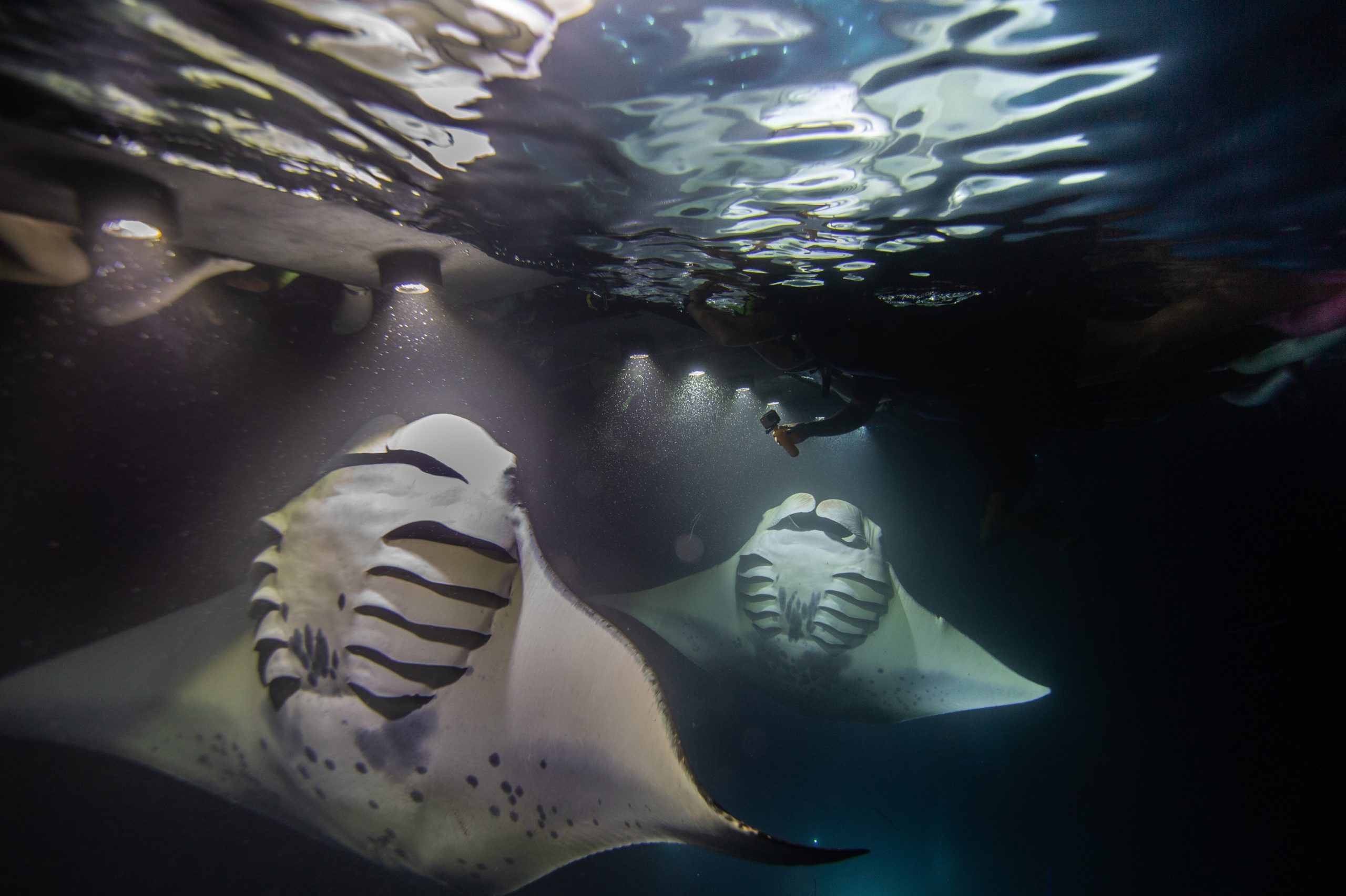Join us on our manta ray tours for a bucket list experience to view the magnificent manta ray in it’s own habitat! It’s truly a once-in-a-lifetime activity that you’ll never forget. Marine Patch offers some interesting facts about manta rays.
The Manta Ray is one of the most fascinating and majestic sea creatures that live on planet earth.
A sighting and experience with one in the wild is a breathtaking experience that often stays with divers forever.
Witnessing such an enormous ray glide through the ocean effortlessly is enough to get any diver hooked.
In this post, we’re going to go through 9 interesting manta ray facts that you may, or may not already know.
1. Manta Rays Are Covered In A Mucous Film
Manta Rays are covered in a mucous film that protects them from harmful bacteria, and if it gets removed it can leave the ray open to illness and damage their immune system.
This is why it’s a big no-no to touch Manta Rays in the wild, as doing so will remove this protective mucous film.
This is why Rays and other fish feel slimy to the touch, and it’s not helpful to pick them up or touch them. A good rule of thumb to follow is to not pick up or touch anything that lives in the ocean.
2. Manta Rays Are Filter Feeders
These beautiful rays are filter feeders, which means they feed on tiny crustaceans such as Plankton and Segmented worms.
They will glide by large schools of Plankton and scoop them up with their mouths wide open.
From there, they can filter out the food, and get rid of anything that they do not want to feed on. Much like how Whale Sharks feed.
3. Manta Rays Are Harmless
Although Manta Rays look like they are dangerous, they are in fact harmless. Unlike their Sting-Ray cousins, they do not have a stinger, and really don’t have any way of hurting you.
They do have around 300 tiny teeth, but they certainly aren’t sharp enough to penetrate your skin.
If a Manta Ray feels threatened or in danger whilst around you, they will flee the scene at speeds of up to 24/km/h.
4. Manta Rays Are Among The Largest Animals In The Ocean
Manta Rays are much larger than you may think, with some having a wingspan of up to 7-feet and weighing up to two tons!
That is as much as a Giraffe or a White Rhino! Due to their large size, they are not often seen in Aquariums and very few can hold them.
This means the best place to witness them is in the wild. There are some amazing resorts that you can visit to spot Mantas in the wild, such as the Manta Ray Island Resort.
5. Manta Rays Have To Swim To Stay Alive
Manta Rays belong to a group of fish that are in a “constant state of perpetual motion”.
This means that Mantas never stop swimming, and they need to stay on the move to survive.
The forward motion from swimming pushes water over their gills which they use to extract oxygen, so when they are not swimming they are not getting any oxygen.
6. Manta Rays Jump Out Of The Water
Scientists are still baffled as to the reason why Manta Rays jump out of the water and put on an exceptional display.
The most likely reason is to escape predators, give birth, and shake off parasites.
Mantas have been spotted leaping out of the water in groups for hours at a time, it’s a spectacular performance.
7. Manta Rays Are Found In Tropical And Subtropical Waters
Manta Rays have been spotted both north and south of the equator, but there are some places they like to gather.
Indonesia, Thailand, Spain, The Maldives, and Australia are all among the best places in the world to spot Mantas in the wild.
The furthest north a Manta Ray has been spotted was near South Carolina in the US, and the southernmost recorded was around New Zealand.
8. Manta Rays Are Intelligent
The Manta Ray has the largest brain-to-body weight ratio of any living fish, making it a rather smart animal.
It’s though that this large brain is part of the reason why they are so inquisitive, and allow humans to come so close to them.
Not only that, but they are social animals that exhibit behaviors such as playing and foraging.
9. Manta Rays Are Classified As Endangered
The International Union for Conservation of Nature (IUCN) has announced that the Manta Ray now joins 16,000 other species on the Red List of Threatened Species.
Humans are the biggest threat to Manta Rays, largely due to overfishing and being caught and entangled in fishing nets.
Mantas are targeted for the gill plates, which they use to filter feed on small Plankton.
The relatively new Asian-based trade is making a significant impact on wild Mantas as the demand for their body parts increases.
Final Thoughts
Manta Rays are some of the most beautiful creatures on earth, and witnessing them in person is an experience like to other.
Sadly experiences with Mantas becoming quite rare as the population is decreasing year on year due to overfishing.
If you do happen to get the opportunity to swim with a Manta or witness one in person, then I highly suggest you take it.
These harmless fish are amazing and their size of them is breathtaking. The way they glide through the water is much like a bird, and it’s fascinating to see up close.









